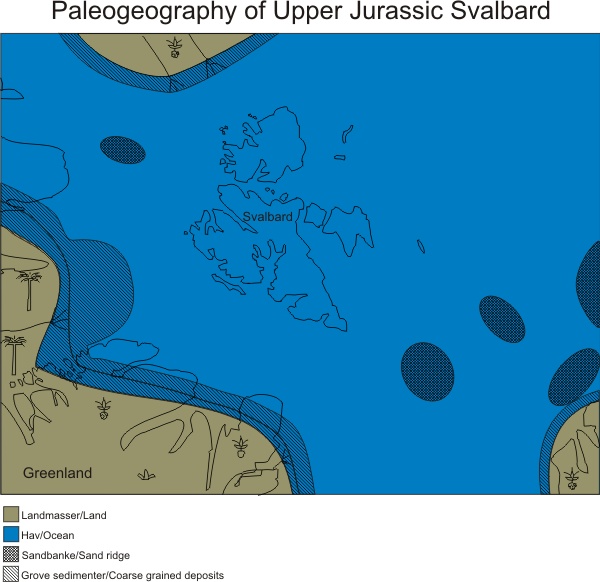Svalbard is an archipelago of 62 700 km2, of which 60% is permanently covered by glaciers. Spitsbergen is the largest island. Geologists have for a long time understood the archipelago’s value for science, as the sedimentological deposits covers the entire history from Precambrian metamorphic through Paleozoic and Mesozoic fossil-rich sedimentary to Cenozoic sedimentary and volcanic rocks.
Fossils
Precambrian
The oldest known traces of life are 3.8 billion years old from Greenland. On Svalbard 110 species of Precambrian microfossils are known from Ny Friesland and Nordaustlandet, from 600 to 800 million year old deposits. At this time, Svalbard was situated in a tropic climate. Some of the fossils are single-celled and preserved with their organic membranes, while others are multicellular and photosynthetic. Many formed algae made mats on the seafloor.
Ordovician
In 1975 the palaeontologist Tove Bockelie discovered fossil pieces from an armoured shell of a primitive, jawless fish 470 million years old, found at Ny Friesland in a limestone deposit. The fish was named Anatolepis heintzi after a Norwegian expert on fossil fishes, Anatol Heintz. Later, similar fossils have been found elsewhere in the world, up to 510 million years old.
Devonian
This time period is represented on Spitsbergen by red-brown sandstone. Especially important for the understanding of evolution is a rich fossil fauna of the extinct group of armoured jawless fish called cephalaspids. Placoderms and coelacanths are also found as fossils, in addition to plants and tracks from a sea scorpion.
Triassic, Jurassic and Cretaceous
Ichthyosaurs and plesiosaurs have been known as fossils from Spitsbergen for more than a century. The first plesiosaur to be described was Tricleidus svalbardensis. It could probably reach a length of 10 meters. The well-known early ichthyosaur Grippia longirostris was first discovered from Svalbard. Excavations since 2004 have uncovered more than 40 specimens of plesiosaurs and ichthyosaurs. Dinosaur tracks have been found several places on the archipelago.

Adapted from Dypvik 2002 |
Cenozoic
Svalbard’s Paleogene coal deposits were made when the archipelago was positioned further south. Large rivers run from what is now West towards the East and transported sand that built deltas along the coast. The coal was produced from algae that was covered and compressed by thick deposits of sediments and later heated. The age of the coal is approximately 55 million years.